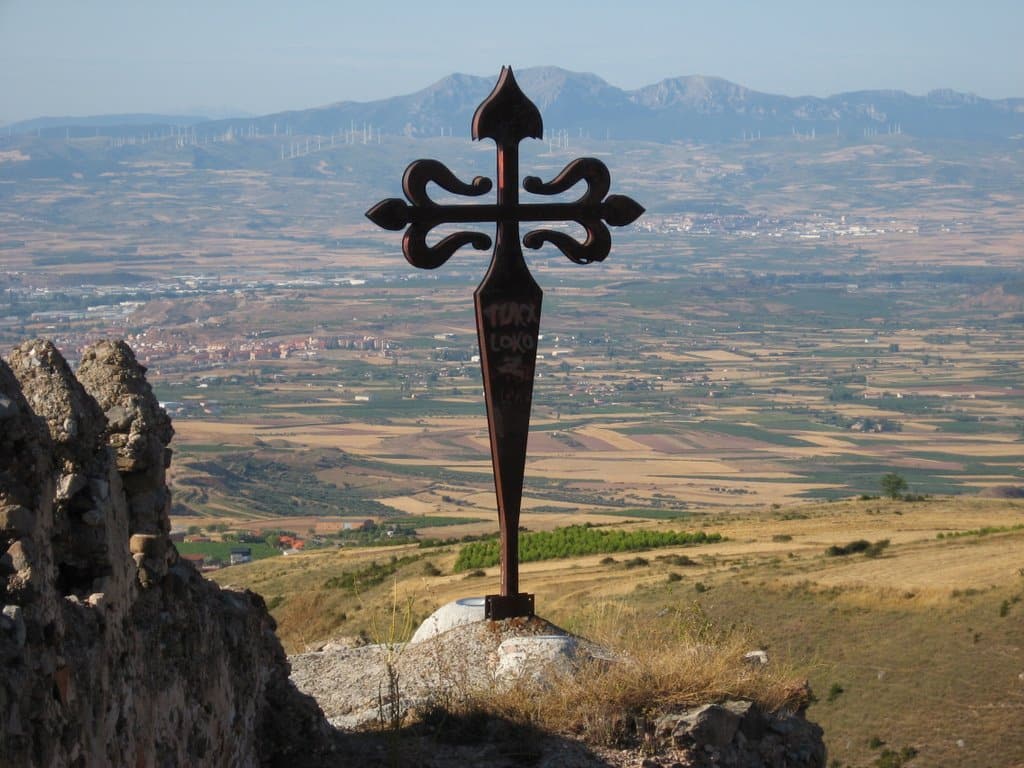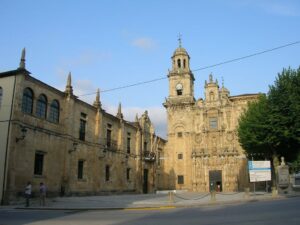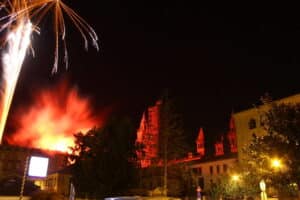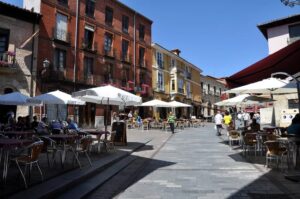El the Camino de Santiago It is one of the oldest and most emblematic pilgrimage routes in the world. For centuries, millions of pilgrims have walked the paths that lead to the tomb of the Apostle Santiago. They seek a spiritual guide, strengthening of faith and connection with the history and culture of Spain.
One of the most important symbols associated with the Camino de Santiago is the Cross of Santiago. It has been an emblem of spirituality, courage and community among the pilgrims who walk the path. Next, we show you the origin and meaning of the Cross of Santiago, and how it has become an essential symbol.
Índice de contenidos
Historical origin of the Cross of Santiago
The Cross of Santiago, also known as Cross of Burgundy or Cross Pate, is an iconic symbol of Spanish culture. It has been used for centuries in various contexts. Its origin dates back to the Middle Ages., in the context of the Crusades and the Reconquest.
According to tradition, it was used by the Apostle Santiago during his mission in Spain. Subsequently, it was adopted as emblem by the Knights of Santiago, a military order created in the XNUMXth century. Its mission was to protect pilgrims traveling to Compostela.
This became a symbol of the fight against muslims In the Iberic Peninsule. It was adopted as an emblem of the Christian forces in the Reconquest. The Cross also became popular with pilgrims traveling the Camino de Santiago. It was used in various artistic manifestationssuch as shields, paintings and embroidery.
Design and meaning of the Cross of Santiago
Its design and meaning have evolved over time. Because of this, they can be found in different forms. In addition, its meaning has changed over time, emerging different variations in different contexts.
Characteristics of the Cross of Santiago
It is characterized by its latin cross shape with four equal arms and one eagle feet base. The arms of the cross are usually finished off in the shape of a fleur de lis, which gives it a stylish and elegant appearance.Some of its variations are:
- Cross of Santiago Pate: It has wider extremities and ends in the shape of a fleur de lis. It is common on the Camino de Santiago and is used as signaling for the routes that lead to Santiago.
- Cross of Santiago Fleur de lis: Similar to the previous one, but with thinner ends of the arms.
- Cross of Santiago de Orense: It has the arms in the shape of a clover and the central part slightly displaced upwards.
- Cross of Santiago de Calatrava: It is distinguished by having the arms slightly curved upwards.
- Cross of Saint James of Malta (St. John’s Cross): It has narrower extremities that end in the shape of a ball.
- Cross of Santiago de Montesa: This cross has arms curved downwards.
Symbolism of the Cross of Santiago
Good agency to do the Camino de Santiago is one that provides information of interest. Take a seat, what we want to tell you is sure to interest you.
In its beginnings, during the Middle Ages, the Cross of Santiago acquired a strong symbolism as emblem of the fight against muslims. During the Reconquest, the Christian forces carried it on their shields and banners as symbol of their commitment in the defense of the Christian faith.
Over time, it became popular among pilgrims traveling the Camino de Santiago. became a symbol of spirituality and religious devotion. Likewise, the Cross was used in various artistic manifestations, such as shields, paintings and embroidery, to highlight its symbolic value and its historical importance.
Today, it remains an important symbol of Spanish culture. It can be found in numerous artistic manifestations, such as coats of arms, medals, and jewelry. Also used as decorative element in architecture and contemporary design.
In addition, the Cross of Santiago has a spiritual and symbolic meaning. For some, the Cross represents fighting adversity and the importance of faith in difficult times. For others, it represents the importance of history and tradition, and the role that these elements play in Spanish culture.

The Cross of Santiago today
The Cross of Santiago remains an iconic and symbolic element of Spanish culture today. Although its origin dates back to the Middle Ages, its symbolic value and historical relevance remain intact in contemporary society.
Today, it is used in a wide variety of contexts. Found in religious buildings, such as the Cathedral of Santiago de Compostela, and in monuments that honor the figure of the Apostle Santiago.
In addition, it has become an important element in the identity of many regions of Spain, especially in Galicia. It is located in the city of Santiago de Compostela and is an essential part of its culture and traditions.
This Cross has also become a symbol recognized throughout the world. Found in Craft Items (jewelry, t-shirts, mugs and other souvenirs) popular with tourists visiting Spain and in particular the Galicia region.
The Cross of Santiago remains a symbol of Christian faith, spirituality and religious devotion, as well as a symbol of Spain’s rich history and culture. In addition, it is a constant reminder of the importance of the Apostle Santiago in the history of Spain and in the spiritual life of many people.
The Cross of Santiago as a symbol of the Camino de Santiago
This is also one of the most important symbols associated with the Camino de Santiago, one of the most famous pilgrimage routes in the world. So when doing the French Camino de Santiago de Compostela from Sarria it can be seen in different contexts within these routes, including signs that indicate the direction of the road
For centuries, the cross has been used as an emblem of spirituality and pilgrims pledge who walk the path to tomb of the Apostle Santiago in the Cathedral of Santiago de Compostela. Those who bear the cross seek the spiritual guidance of the Apostle Santiago and strengthen their faith in him along the way.
In this context, the Cross of Santiago has become a symbol of the solidarity and community among pilgrims of the Way. This represents the connection between the thousands of pilgrims who travel the road, and who share a common goal: to reach the tomb of the Apostle Santiago.









